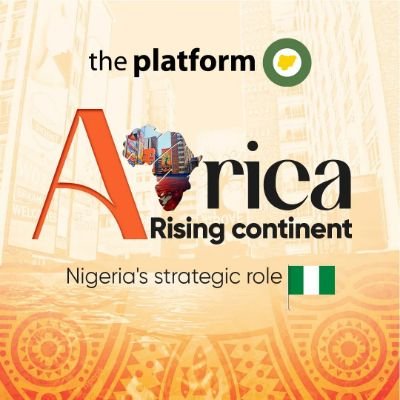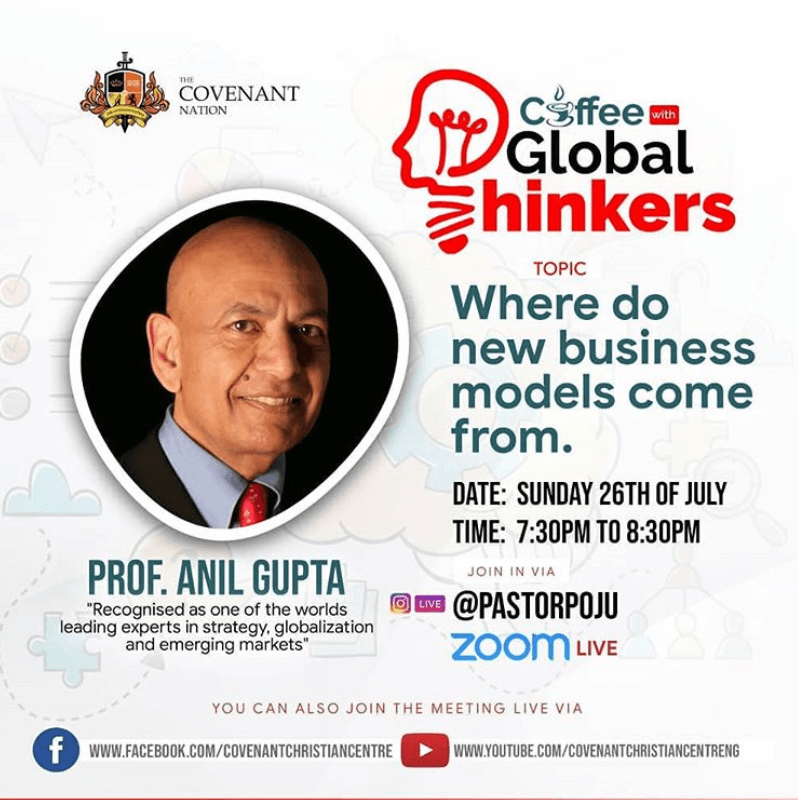Prof. Gupta started by introducing his topic, Where Do New Business Models Come From? He started off by stating that his professional background and experience is something that has helped him to experience this topic up-close. He proceeded to break down business innovation into two types; namely ‘new to the world’ and ‘new to the local context.’ For the examples of business innovation that falls under the example of ‘new to the world’, Prof. Gupta mentioned Uber and Google. For Uber, they invented the ridesharing phenomenon to the world and for Google who introduced the algorithm-based search on the internet. For ‘new to the local context’ in ridesharing, he mentioned Gokada in Nigeria as an example and also Go-Jek in Indonesia.
He emphasised that both types of business innovation namely; ‘new to the world’ and ‘new to the local context’ are equally important depending on how one looked at each because each of them has its own significant economic impact. He went on to say that the ‘new to the world’ kind of business innovation requires a significant degree of localisation. He took his listeners back to the interlock braking system that moved gradually from being used for aircraft only to being used for commercial vehicles, trucks and buses and then it went to high-end cars and then further moved down to be used for mass-market cars and in recent years, it has come to motorbikes.
He said that he looks at innovation as a system with three elements and that each element is a choice that the company makes to determine how to innovate. The first element is the element that answers the question of, “who are our target customers?” The second element he described as the element that answers the question of “what kind of customer value was to be offered to these target customers?” The third element is the question of “how do we deliver this value to our target customers?”
He said that, if one looked at the two types of innovation in comparison to each other, that is, the ‘new to the world’ in comparison to ‘the new to the local context’, there was no reason to look at the introduction of ABS to the car industry as less important than its introduction to the airplane.

To answer the question posed by his topic, Prof. Gupta said that one was actually talking about dramatic change. To show where there was a dramatic change in who the target customers are, he used the example of Apple which brought computers to people and not companies when they first came on board. Before then, the customers for computers were corporations and not individuals. He also mentioned Southwest Airlines which made air travel accessible to a new kind of customer – the lower class who were lower in strata to the middle and upper classes. He followed this with examples like and GE which launched Mac400, an ECG machine that was sold for just a few hundred dollars and was even made mobile both for hospitals as well as individual practitioners. To buttress his point about how companies innovate, he used the example of Lumkani in South Africa helping to prevent inferno related accidents by their fire detection innovation. He also mentioned Copia in Kenya that innovated to serve the Base of the Pyramid Consumers in rural areas.
He went on to talk about Tizeti in Nigeria which creates unlimited broadband internet data at a price that is fifty per cent lesser than their competitors’ price. He went on in his mentioning of innovation in the local context to mention Kobo360, a logistics company that has innovated in the delivery of goods in Nigeria. He also made mention of Zipline that uses battery-powered drones to send medical supplies to rural areas in Rwanda. Khan Academy too was part of the examples he gave in addition to companies that innovated.
He went back to talk about the three elements that he had earlier identified as being responsible for the choice of businesses in creating innovation. In summary, he highlighted the overall framework that companies followed to innovate as being derived from a combination of three archetypes namely;
- A dramatic redefinition of who the target customer is,
- A dramatic reconceptualization of delivered customer value and
- A dramatic re-engineering of the value chain.
Using the example of IKEA, he talked about how they have innovated to meet the third element he earlier mentioned which is how customer value was being delivered. He referred to their creation of flat-packed furniture that reduced the geographical constraints of moving furniture from their place of manufacture to the customer due to the bulky nature of furniture. He also mentioned Helium Health in Nigeria and their use of IT to innovate at what they do. He used Plenty as an example from the US as changing the face of agriculture and the costs of land and water typically required for farming. Another example he used was Apple and how they were bringing computers to individuals instead of companies. He also came back to 54Gene from Nigeria in Africa.
To bring his talk to a close, he recapitulated the major highlights of his speech; the two kinds of innovation namely, the innovation that is ‘new to the world’ and the innovation that is ‘new to the local context.’ He also recapitulated the system of the three elements that influence a company’s choice to innovate which are; who the target customers of the business are, what the customer value to offer is and how this customer value will be delivered.

